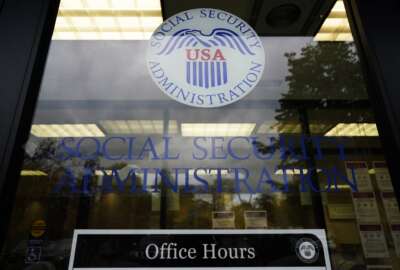Social media could become part of security clearance process
For the past six months, the Director of National Intelligence has been trying to determine whether the government should do Google searches on people who hold ...
For the past six months, the Director of National Intelligence has been trying to determine whether the government should do Google searches on people who hold security clearances.
Their question: Could publicly available information — the type that pops up when you type a name into a search box — tip off investigators that someone with access to sensitive government property may turn violent or become a spy?
The answer becomes more critical as the government moves toward evaluating security clearance holders all the time, rather than checking up on them every few years.
“We’re trying to identify whether or not it’s practical, viable and feasible to even use [social media] as part of the evaluation and adjudication process,” said National Counterintelligence Executive Bill Evanina, whose office within DNI is responsible for setting security policies.

In multiple pilot programs, investigators are monitoring volunteers’ online behavior. They are looking at “any and all information that’s literally available on the Internet without going through any password-protected information,” he said. In addition to using Google searches, they are combing through government and commercial databases to look for details such as real estate or court records. They may also look at tweets and other public online communications.
The volunteers are security clearance holders in good standing. DNI has been working with privacy and civil liberties advocates to adjudicate information that comes out of the pilots, Evanina said.
Evanina said he has not been briefed on the results yet, but the pilots continue. He hopes to have enough data by the end of the year to make a decision.
But a government source who spoke at an industry event earlier this month but did not get permission to use his name publicly, said one pilot included 5,000 volunteers. When investigators conducted a random sample of 300 people, they found that 28 percent of them — fewer than 100 people — had something in their social media files that would cause background investigators to take a second look. The red flag could be as simple as having foreign connections on a networking site like LinkedIn, the source said.
The government does not use social media right now to evaluate the 5 million people who hold security clearances. Evanina acknowledged, it’s missing out on what could be a powerful tool in the effort to continuously vet clearance holders. For example, Evanina said, continuous evaluation could enable security officials to know immediately when a clearance holder has been arrested on a drunk driving charge. Today’s system of periodic background checks means the same officials may have to wait years before learning that information.
But for the government to incorporate social media into its background check procedures, it must be feasible, Evanina said.
“Social media grows every day, exponentially. We’re trying to find a way that’s not only scalable but also functional,” he said. “We’re thinking about now and three years from now.”
Regardless of whether social media becomes part of the background check process, DNI is moving forward with a system of continuous evaluation, Evanina said. It has no plans to forgo current tools, including interviews, polygraphs and reference checks.
“We’ve made significant and substantial progress over the past few months in this effort,” he said. He expects DNI to launch the system early next year, starting with top-secret clearance holders. Eventually, the government will do continuous evaluation on all 5 million clearance holders, he said.
RELATED STORIES:
In and out of government, employers hesitate to Google employees
Feds fast-tracking new system for keeping tabs on cleared personnel
Questioning Clearances
Copyright © 2024 Federal News Network. All rights reserved. This website is not intended for users located within the European Economic Area.





